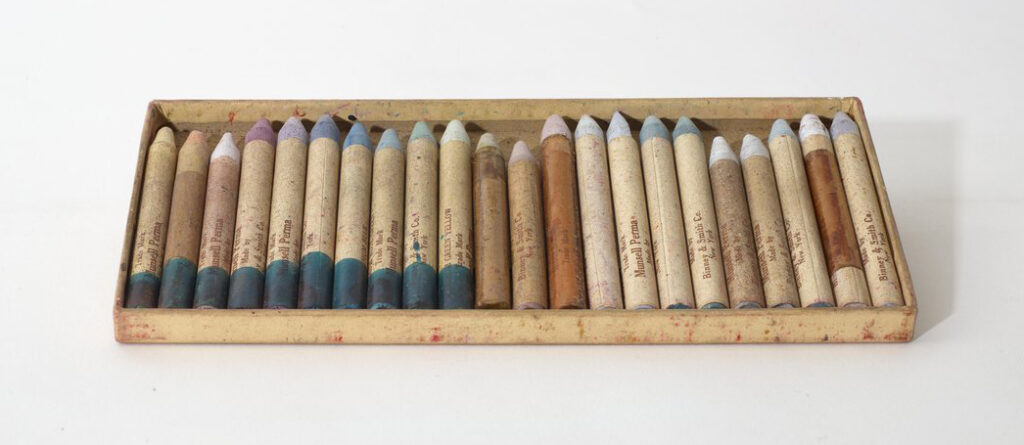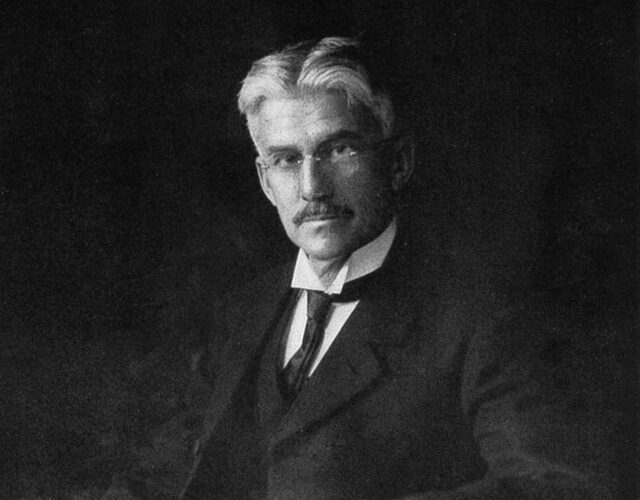Painter and professor Albert H. Munsell (1858–1918) had strong feelings about color—so strong he constructed a rational classification system for it. His system is still largely considered one of the most successful in the world.
Seascapes and portraits were the Boston-born Munsell’s subjects of choice. He attended the Massachusetts Normal Art School (now the Massachusetts College of Art and Design), and served on the faculty there for 37 years.

During his lifetime he patented several instruments relating to art and color measurement. When he published A Color Notation in 1905, he first proposed a sphere system for describing colors. Munsell discovered that three elements were essential to determining colors: hue, value, and chroma. According to the book’s glossary, hue is “the respect in which red, yellow, green, blue, etc., differ one from another”; value is “relation of one object . . . of a picture to the others, with reference to light and shade”; and chroma is “color intensity.”
As Munsell worked on his color system further, he discovered that the variation in brightness among colors is too great for them to be confined to a sphere. So he arranged the colors in what is dubbed a “color tree”—a circle with 10 segments that are ordered according to hue, value, and chroma. In 1915 Munsell published his Color Atlas, which was reprinted posthumously in 1929 with the title Munsell Book of Color. The later book includes plates of color for comparison, and this edition is still used today.
The year before his death, Munsell founded the Munsell Color Company. His son, A.E.O. Munsell, continued to run the company and to promote his father’s color system after 1918. Eventually the company became the Munsell Color Foundation, which donated funds to the Rochester Institute of Technology to create the Munsell Color Science Laboratory.
1881
Munsell graduates from the Massachusetts Normal Art School.
1886
Munsell’s work is exhibited at the Paris Salon for three years.
1889
Munsell receives his first patent, for the “Artist’s Easel”—an improved version of the old standby.
1905
Munsell publishes his first book, A Color Notation.
1906
Munsell is issued a patent for his “Color Chart or Scale.”
1983
Munsell Color Science Laboratory is founded at the Rochester Institute of Technology.




